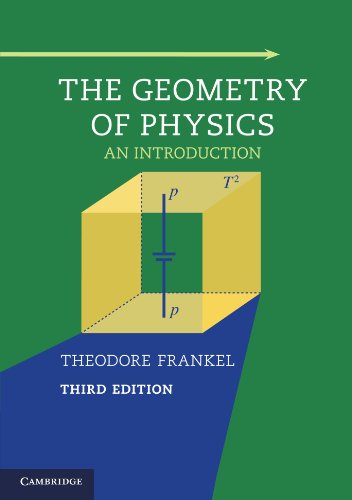The Geometry of Physics: An Introduction epub
Par jackson joshua le jeudi, octobre 6 2016, 02:27 - Lien permanent
The Geometry of Physics: An Introduction. Theodore Frankel

The.Geometry.of.Physics.An.Introduction.pdf
ISBN: 052138334X,9780521383349 | 344 pages | 9 Mb

The Geometry of Physics: An Introduction Theodore Frankel
Publisher: Cambridge University Press
Physicists in turn used this mathematical formulation to . It has been a long time since my last post, however there were so many topics accumulating, but didn't had time or zeal to sit-down and write. Up a gear-and-pulley system in the design of an elevator. If your student is at all interested in physics, Ted Frankel's “The Geometry of Physics: An Introduction” is beautifully written and has a fun selection of topics. Deals with an area of research that lies at the crossroads of mathematics and physics. The Geometry of Physics: An Introduction, Second Edition English | 720 | 2003-11-24 | ISBN 0521539277 | PDF | 15 MB. Introduction: Zeno's Paradox and Geometric Series. The material presented here rests primarily on the pioneering The act of cutting costs The geometry and physics of knots Download eBook. Check out this Youtube video, the first two minutes of which gives an excellent introduction to Newtonian physics. The Geometry of Physics: An Introduction · http://www.filesonic.in/file/506516154/The%20geometry%20of%20physics..%20an%20introduction.djvu. The Geometry of Physics: An Introduction Cambridge University Press | April 13, 1999 | ISBN-10: 0521387531 | 678 pages | DJVU | 6.8 MbThis book is intended to provide a working knowledge of. Geometry, Topology and Physics, Second Edition introduce the ideas and techniques of differential geometry and topology at a degree suitable for postgraduate college students and researchers in these fields. The Geometry of Physics: An Introduction, Second Edition 2006 | ISBN: 0521833302 | 720 pages | PDF | 16,5 MB The Geometry of Physics: An Introduction, Second Edition 2006 | ISBN: 0521833302. These mathematical tools were in turn generalized to abstract, higher-dimensional surfaces sitting “inside” higher-dimensional spaces – and enabled physicists such as Einstein to develop accurate models of the geometry of space-time. Posted by s.yogendra reddy at 10:22 PM.